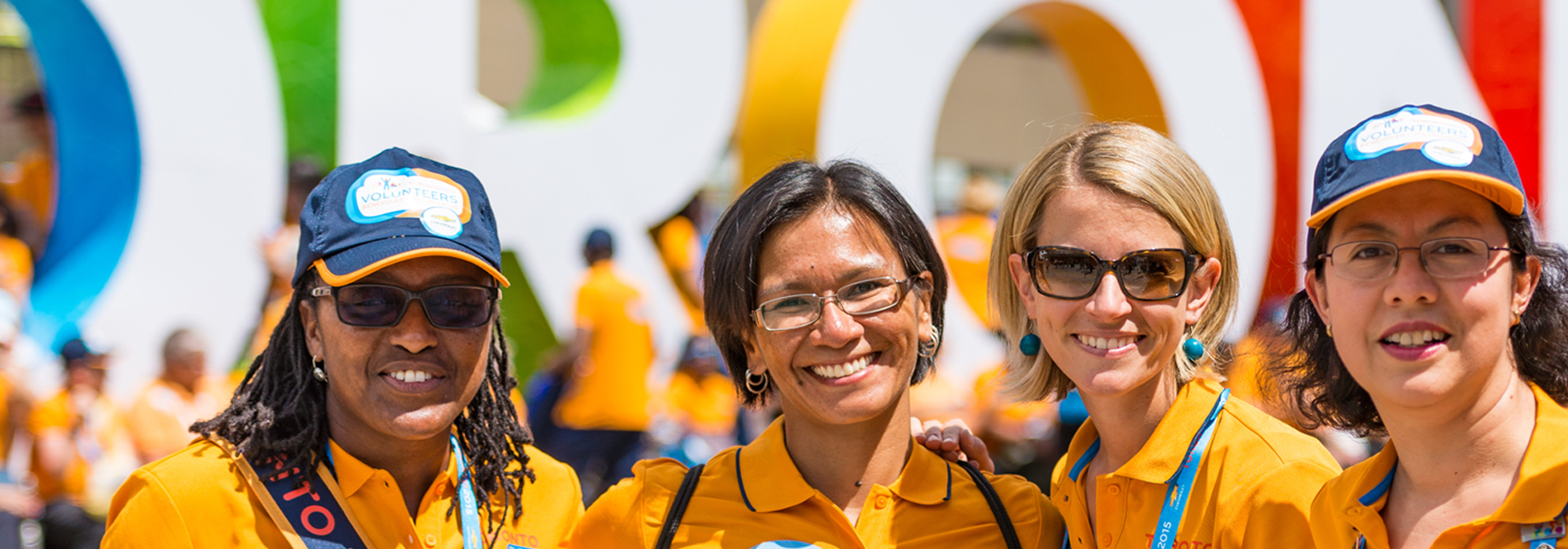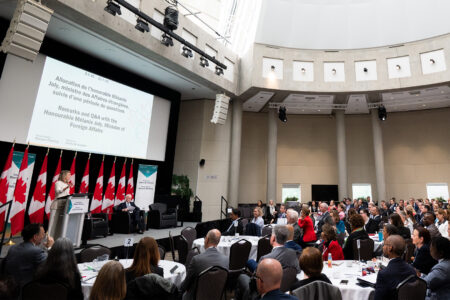
Immigration has sparked nativist sentiments, racial divisions and economic insecurities in Western liberal democracies. The election of Donald Trump as the US president is evidence of the political foothold that anti-immigrant sentiment is gaining. It comes in the wake of Britain’s Brexit vote and the rise of populist nationalist parties in France, Italy and Germany.
Canada has, by and large, escaped this populist sentiment, though in some pockets of the Conservative Party and among Quebec nationalists, misgivings about immigration are voiced in the code words of preserving “Canadian values.” Still, even Canada harbours ambivalence about immigration, despite its credible record of welcoming immigrants, including, recently, Syrian refugees. An October 2016 Angus Reid/CBC national opinion poll shows 67 percent of Canadians are satisfied with the integration of immigrants into their communities, but 68 percent also want immigrants to do more to fit into Canadian society.
Hundreds of thousands of immigrants every year are needed to grow the Western countries’ economies and balance their populations. The arrival of such large numbers of new citizens is transforming these nations and cultures, arousing the fear of loss of control and identity in historically white societies. Cultural and ethno-racial diversity is changing the feel and face of these communities and arousing resentment. With these developments, economic and business interests have come to clash with social and cultural nationalism.
But multiculturalism need not be viewed as a source of social divisions. It has another side to it, that of the common bonds of institutions, geography, and the interdependencies of a society and nation. The common ground in which cultural diversity is embedded works and can be further made to work for social cohesion.
Diversity in the age of human and civil rights
On arriving in a new country, immigrants do not and cannot abandon their memories and identities, no matter how motivated or coerced they may be to adopt the ways of a host nation. Previous waves of immigrants were, by and large, disconnected from their homelands on arrival. But with cheap air travel, telephone calls, electronic communications and satellite TV, today’s immigrants remain in touch with their homelands, both in personal relations and in political and cultural terms. Grandmothers can even supervise grandchildren across the oceans through Skype. Present-day immigrants retain their cultures longer and hold onto their identities more strongly, because globalization has blown away even the myth (it was seldom the reality) of uniform national cultures. Immigration injects new cultures into national societies.
The multiplicity of ethno-racial groups and their community cultures has always been a feature of most modern societies. Cultural identities persist in second and third generations, producing hyphenated nationals. Immigration expands the range of such subcultures, making multiculturalism the lived reality in many societies, whether the official policy recognizes it or not.
Contemporary multiculturalism is more than the multiethnicity and multiracialism of population. It combines this diversity with the current liberal regime of civil and human rights. It is the equal entitlements provided to all citizens, irrespective of race, colour, ethnicity or religion, that make contemporary multiculturalism inevitable. In Canada, for example, almost every claim to the accommodation of religious and cultural differences is based on entitlements in the Charter of Rights and Freedoms. Similarly, in the US, the Civil Rights Acts have promoted cultural and religious diversity. A nation now is all the more a composite of communities of distinct identities entitled to recognition and accommodation within its prevailing regime of rights and freedoms. In this sense, multiculturalism is the new nationalism.
Community cultures and the common ground
In multiculturalism, the cultures of various communities interact with their society’s common ground – the overarching mainstream culture, economy, and political and social citizenship that confer entitlements of public participation, protection and access to services. The two components evolve and change in tandem with each other.
The “cultures” of multiculturalism are limited in scope: they are found in domestic and community life. Sociologists call these subcultures, not unlike regional or corporate cultures or those of youth and women. But even in these private spheres, national norms and values have defining roles. For example, polygamy and corporal punishment of children are not permissible even if they are a particular community’s historic practices. Large areas of life are excluded from these subcultures, such as work, law and politics, and the economy. Traffic laws, for example, do not recognize any cultural differences.
Community cultures are embedded in the common ground of norms, values and institutions of the mainstream society. The public culture consisting of national languages, ideology, shared territory and environment, citizenship, laws, economy, technology, services and historical narratives forms the ground upon which community cultures are cultivated. It includes both the values, ideologies and institutions that define the society in broad strokes and the ethics of mundane behaviours of public life, such as lining up to get on a bus, trusting strangers in the streets or not littering in public places.
The subcultures and the common ground penetrate each other and change over time. The common ground is continually reconstructed by absorbing community cultures’ practices and behaviours. A vivid example is the incorporation of global cuisines in the mainstream. For their part, ethno-racial subcultures incorporate mainstream business practices, marriage ideals, dating mores, media discourses, aesthetics and national ideologies.
So, multiculturalism operates in two directions: it bestows recognition on ethno-racial identities and supports the rights of community cultures to hold onto their differences, and it infuses diversity into the mainstream institutions of the common ground through a process of reasonable accommodation, making them more pluralistic.
Countries that manage these two processes through regimes of rights, equality of citizenship and strong civic culture attain a high level of social cohesion and integration of immigrants. Yet it is not always a smooth transformation. The fortunes of multiculturalism rise and fall with economic cycles and political swings from the left to the right and vice versa. With Canadians showing misgivings about how well immigrants are fitting in and a wave of anti-immigrant sentiment in the US, multiculturalism is in under pressure.
Making multiculturalism work for national cohesion
Although the public mood shifts, the inevitability of multiculturalism makes it a permanent condition of contemporary democratic societies. How can public policy guide multiculturalism to contribute to a more cohesive society that is also diverse and fair?
In Canada, acknowledged to be an example of successful multiculturalism, the recognition and accommodation of ethno-cultural differences has, by and large, gone well. The Charter and policies at all levels of government have produced flourishing community cultures and religious freedoms. Controversies about the wearing of the niqab, foreign buyers in the housing market or racist attitudes to minorities among police regularly crop up, to be sure, but there are laws and processes to address them.
But is our common ground as strong and effective as it could be? A deliberate and vigorous enforcement of mainstream society’s laws, norms, etiquettes and ethics is the path to better integrate immigrants and promote social cohesion.
First, Canada’s human rights laws and conventions, such as the Charter of Rights and Freedoms and the provincial Codes of human rights, should be amended to specify the criteria for “reasonableness” and include promotion of public order and community interests among the considerations in allowing accommodations of individuals’ cultural and religious rights. Individual rights should be balanced against the imperatives of social cohesion and public interest. Present conceptions of human rights promote the agency of individuals, without much regard to the responsibilities towards human community and national integration.
Second, local governments should have cultural development programs to draw people into institutions and activities that build “bridging” bonds, such as intercultural fairs, sports, media platforms, and artistic and literary activities of interest to all. These programs should aim to involve all citizens, rich and poor, majority as well as minority groups, including second- and third-generation ethnic minorities and immigrants.
Third, English-language and French-language education services for immigrants should be expanded to include instruction in both the civic culture and the national history of Canada.
Finally, immigrants at the stages of selection, entry, settlement and citizenship should be given a respectful, imaginative and appropriate orientation introducing them to Canadian public norms, expected behaviours of everyday life, gender equality and the ethics of living in a multicultural society, going beyond lectures on motherhood Canadian values.
These types of measures would strengthen Canada’s common ground and to integrate immigrants in the mainstream society. They would enrich the ongoing processes of multiculturalism and resolve the tension between the economic need for increased immigration and the desire to preserve the social and cultural continuity of the host society.
Photo: Shutterstock/DayOwl
Do you have something to say about the article you just read? Be part of the Policy Options discussion, and send in your own submission. Here is a link on how to do it. | Souhaitez-vous réagir à cet article ? Joignez-vous aux débats d’Options politiques et soumettez-nous votre texte en suivant ces directives.








